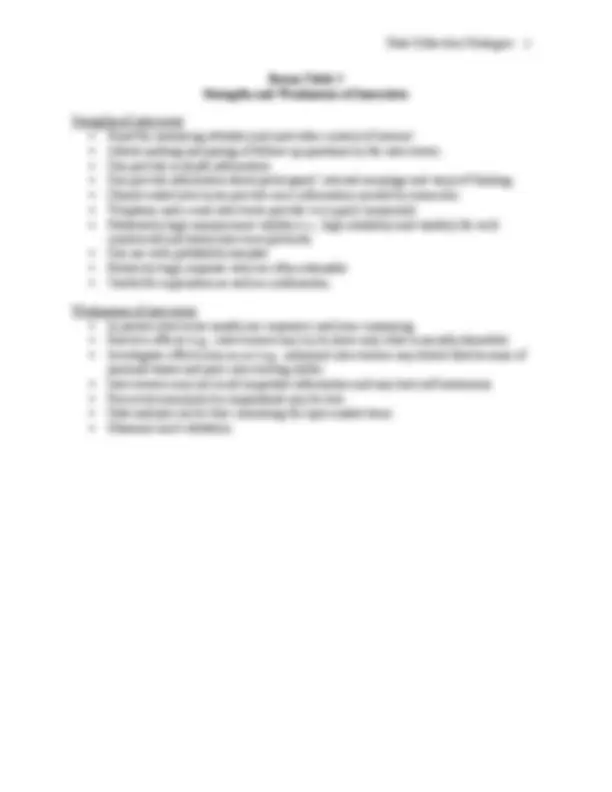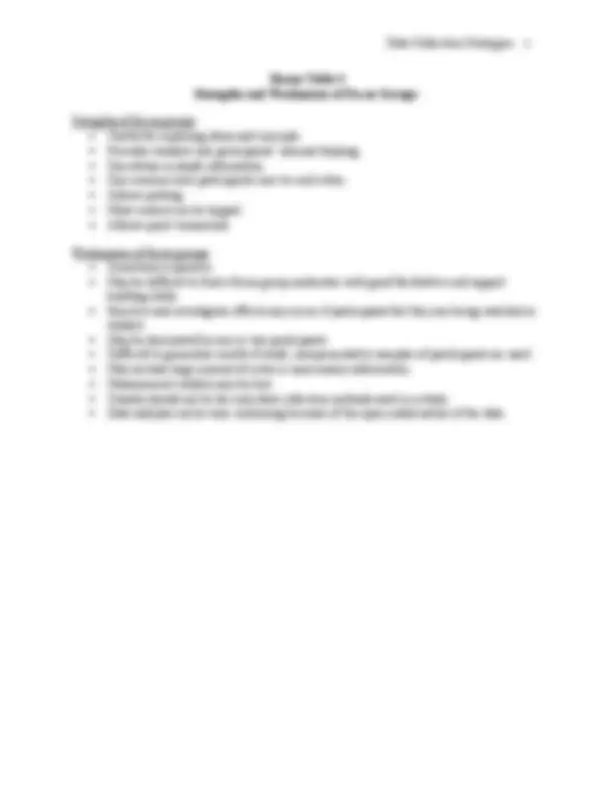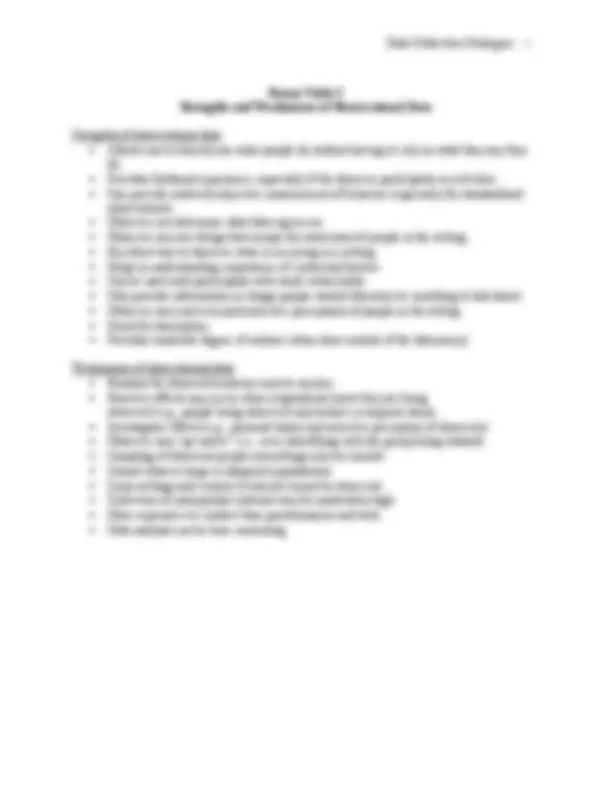





Study with the several resources on Docsity

Earn points by helping other students or get them with a premium plan


Prepare for your exams
Study with the several resources on Docsity

Earn points to download
Earn points by helping other students or get them with a premium plan
Community
Ask the community for help and clear up your study doubts
Discover the best universities in your country according to Docsity users
Free resources
Download our free guides on studying techniques, anxiety management strategies, and thesis advice from Docsity tutors
An in-depth analysis of various data collection strategies, including tests, questionnaires, interviews, focus groups, observational data, and secondary data. Each strategy is discussed in terms of its strengths and weaknesses, offering valuable insights for researchers. Topics covered include measurement validity, response rates, cost, and data analysis.
What you will learn
Typology: Study notes
1 / 6

This page cannot be seen from the preview
Don't miss anything!




Bonus Table 1 Strengths and Weaknesses of Tests
Strengths of tests (especially standardized tests)
Weaknesses of tests (especially standardized tests)
Bonus Table 2 Strengths and Weaknesses of Questionnaires
Strengths of questionnaires
Weaknesses of questionnaires
Bonus Table 4 Strengths and Weaknesses of Focus Groups
Strengths of focus groups
Weaknesses of focus groups
Bonus Table 5 Strengths and Weaknesses of Observational Data
Strengths of observational data
Weaknesses of observational data